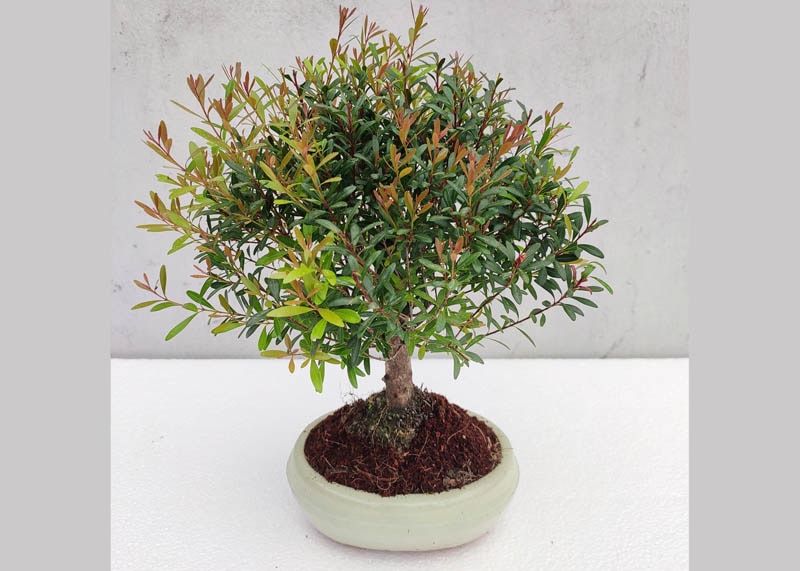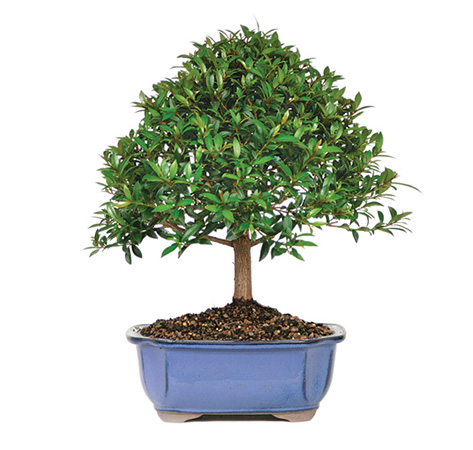Brush Cherry Bonsai trees need well-draining soil and moderate watering. They thrive in bright, indirect sunlight.
Brush Cherry Bonsai trees, known for their glossy green leaves and small white flowers, make attractive indoor plants. Native to Australia and New Zealand, these trees are easy to care for and can adapt well to different environments. They require consistent pruning to maintain their shape and health.
Regular watering is essential, but the soil should never be waterlogged. These trees are susceptible to pests like aphids and scale, so regular checks are important. Feeding with a balanced fertilizer during the growing season will promote healthy growth. With proper care, Brush Cherry Bonsai trees can flourish and add beauty to any space.
Introduction To Brush Cherries Bonsai
Brush Cherries Bonsai trees thrive with proper care, including regular watering, pruning, and sunlight exposure. These miniature trees are perfect for both beginners and experienced bonsai enthusiasts.
Origins And History
Brush Cherries, also called Syzgium australe, are native to Australia and New Zealand. These trees are well-known for their small, glossy green leaves. They produce attractive white flowers and red, edible berries. Indigenous people have used these berries for centuries. The tree adapts well to bonsai cultivation due to its small leaves and compact growth. This makes it a popular choice among bonsai enthusiasts worldwide.
Unique Features
Brush Cherries have beautiful white flowers that bloom in clusters. The flowers turn into bright red berries that are edible. The tree has small, glossy leaves which make it perfect for bonsai. It also has a smooth bark that peels off, adding to its visual appeal. This tree is known for its compact growth and can easily be shaped into various bonsai styles.

Credit: www.bonsaiempire.com
Choosing The Right Soil
Selecting the proper soil ensures healthy growth for Brush Cherries Bonsai trees. Opt for well-draining, nutrient-rich soil to support robust root development.
Soil Composition
Brush Cherries need soil that drains well. A mix of 50% akadama, 25% pumice, and 25% lava rock works best. This blend ensures roots get enough air. Too much water can harm the tree. The soil must be loose and not compact.
Drainage Importance
Good drainage prevents root rot. Roots need air to breathe. Use pots with drainage holes. Add a layer of gravel at the bottom. This helps water to flow out easily. Never let water sit in the pot.
Potting And Repotting Tips
Early spring is the best time to repot your Brush Cherries Bonsai Tree. The tree is still dormant. This reduces stress on the plant. Choose a pot with good drainage holes. Make sure the new pot is slightly larger. Fresh soil provides new nutrients. This helps the tree grow strong.
Follow these simple steps to repot your bonsai tree:
- Remove the tree from its current pot.
- Gently loosen the roots with your fingers.
- Trim any long or tangled roots.
- Place the tree in the new pot.
- Fill the pot with fresh soil.
- Water the tree well.

Credit: www.bonsaiboy.com
Watering Guidelines
Ensure your Brush Cherries Bonsai tree thrives by watering it thoroughly, allowing the soil to dry slightly between sessions. Adjust watering frequency based on the season, providing more water in summer and less in winter.
Frequency And Amount
Brush Cherries bonsai trees need water regularly. Water them every two to three days. The soil should be moist but not soggy. Use a watering can for even water distribution. Check the soil before watering again. Insert a finger into the soil. If it feels dry, then water the tree. Avoid overwatering as it can harm the tree.
Signs Of Overwatering
Yellow leaves are a sign of overwatering. The roots might rot if overwatered. Moldy soil also indicates too much water. The tree may look weak and lose leaves. Reduce watering if these signs appear. Let the soil dry a bit before the next watering.
Fertilization Techniques
Brush Cherries bonsai trees need different types of fertilizers. The most common are organic and inorganic fertilizers. Organic fertilizers include compost and manure. They release nutrients slowly. Inorganic fertilizers are chemical-based. They provide immediate nutrients. Both types can be used for bonsai trees.
Fertilize your Brush Cherries bonsai tree every two weeks. Use a balanced fertilizer like 10-10-10. Reduce fertilization in winter. Too much fertilizer can harm your bonsai tree. Always follow the instructions on the fertilizer package.
Pruning And Shaping
Pruning helps keep your bonsai healthy. Use clean, sharp tools for precise cuts. Trim unwanted branches and leaves. Always cut above a node or bud. This encourages new growth. Remove dead or weak branches first. Avoid cutting too much at once. This can stress the tree. Regular pruning keeps your bonsai in shape.
Wiring helps shape your bonsai. Use flexible wire to bend branches. Wrap the wire around the branch carefully. Bend the branch slowly to the desired shape. Check the wire often. Remove it before it digs into the bark. You can also use weights to pull branches down. Clip and grow method shapes over time. Cut back strong growth and let new growth fill in. Patience is key for advanced shaping.
Pest And Disease Control
Brush cherries bonsai trees often face problems from aphids and spider mites. These pests suck the sap from leaves. They cause the leaves to turn yellow. Scale insects can also be an issue. They attach to branches and leaves. Regularly check your bonsai for pests. Use a magnifying glass if needed. Treat infestations with insecticidal soap or neem oil. Keep the tree healthy to prevent pest problems.
Good air circulation helps prevent diseases. Water the tree at the base. Wet leaves can lead to fungal infections. Always use sterilized tools when pruning. This stops the spread of disease. Fungal diseases can cause spots on leaves. Remove affected leaves immediately. Use a fungicide if needed. Ensure the bonsai gets enough light. A healthy tree resists disease better.
Seasonal Care
Brush Cherries Bonsai trees need extra care in winter. Frost and cold can damage the tree. Move the bonsai indoors if temperatures drop below freezing. Ensure the tree gets enough light indoors. Use a grow light if necessary. Water the tree less in winter. The soil should be slightly dry before watering again. Check for pests regularly. Cold weather can still bring pests.
In summer, Brush Cherries Bonsai trees need regular watering. The soil should be moist but not soggy. Place the tree in full sunlight for at least six hours a day. Fertilize the tree every two weeks. Use a balanced fertilizer for best growth. Prune the tree to maintain its shape. Remove dead leaves and weak branches. Check for pests and treat immediately if found. Monitor the soil to ensure it doesn’t dry out.

Credit: www.bonsaioutlet.com
Conclusion
Caring for a Brush Cherries Bonsai Tree can be rewarding. With proper watering, pruning, and sunlight, it thrives beautifully. Remember to monitor soil moisture and provide the right nutrients. Regular attention ensures your bonsai remains healthy and vibrant. Embrace the journey and enjoy the beauty of your bonsai.

